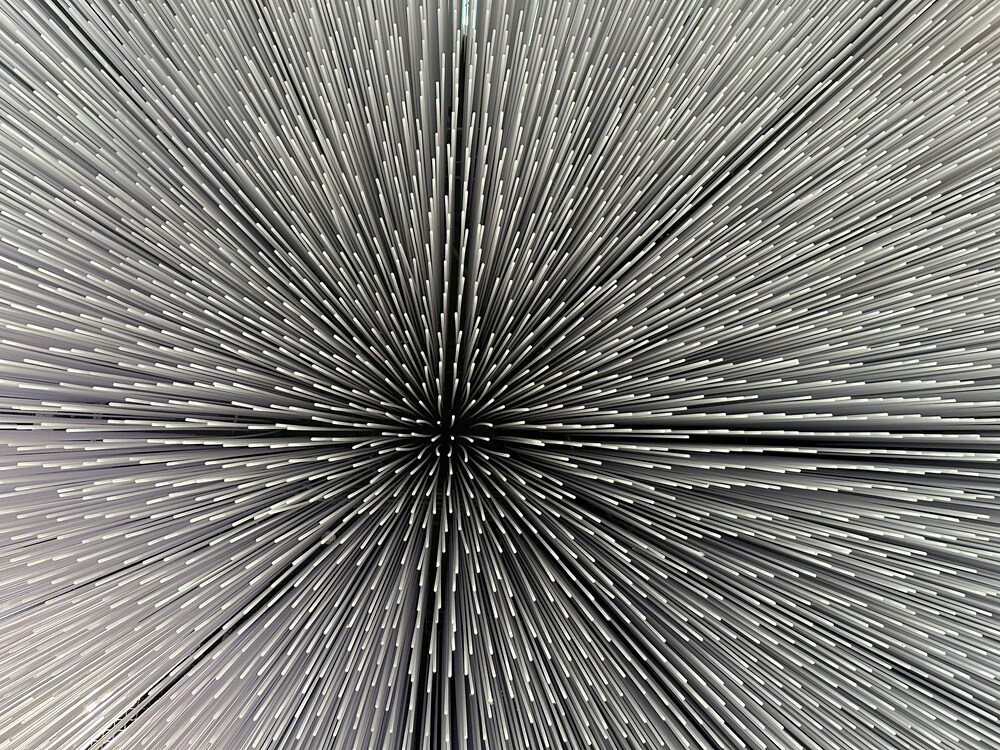- Home
- Articles
- Architectural Portfolio
- Architectral Presentation
- Inspirational Stories
- Architecture News
- Visualization
- BIM Industry
- Facade Design
- Parametric Design
- Career
- Landscape Architecture
- Construction
- Artificial Intelligence
- Sketching
- Design Softwares
- Diagrams
- Writing
- Architectural Tips
- Sustainability
- Courses
- Concept
- Technology
- History & Heritage
- Future of Architecture
- Guides & How-To
- Projects
- Interior Design
- Competitions
- Jobs
- Store
- Tools
- More
- Home
- Articles
- Architectural Portfolio
- Architectral Presentation
- Inspirational Stories
- Architecture News
- Visualization
- BIM Industry
- Facade Design
- Parametric Design
- Career
- Landscape Architecture
- Construction
- Artificial Intelligence
- Sketching
- Design Softwares
- Diagrams
- Writing
- Architectural Tips
- Sustainability
- Courses
- Concept
- Technology
- History & Heritage
- Future of Architecture
- Guides & How-To
- Projects
- Interior Design
- Competitions
- Jobs
- Store
- Tools
- More
The Latest Furnishing Trends in the United States: Style, Sustainability, and Functionality
Discover the latest furnishing trends in the U.S., blending sustainability, functionality, and individuality. From modular furniture and eco-friendly materials to bold colors and regional styles, explore how modern design innovations and personal expression are transforming homes. Dive into the versatility of smart furniture, natural textures, and timeless aesthetics shaping today’s living spaces.

When it comes to home design, staying on top of furnishing trends helps us create spaces that feel both fresh and functional. Across the United States, we’ve seen a shift toward styles that blend comfort, sustainability, and a touch of individuality. Our homes are becoming more than just places to live—they’re reflections of who we are and how we want to feel.
This year, the spotlight is on versatile pieces, natural materials, and bold accents that make a statement. From cozy textures to innovative designs, these trends are reshaping interiors in ways that are both stylish and practical. Let’s explore how these latest trends are transforming homes across the country and inspiring us to rethink our spaces.

Table of Contents
ToggleOverview Of The Latest Furnishing Trends In The United States
Emerging furnishing trends in the U.S. prioritize functionality, sustainability, and personalization. Homeowners are increasingly drawn to adaptable pieces, such as modular sofas and extendable dining tables, that cater to diverse spatial needs.
Natural materials dominate the market, with woods like oak and walnut, linen upholstery, and stone finishes leading designs. These elements create an organic aesthetic while supporting eco-friendly practices.
Bold colors and patterns are gaining momentum, particularly in accent items like rugs, throw pillows, and artwork. Jewel tones such as emerald, sapphire, and amethyst are popular, adding depth and sophistication to interiors.
Multi-purpose furniture appeals to those in urban areas or smaller homes. Examples include beds with hidden storage, foldable desks, and convertible seating. These innovations maximize utility without sacrificing design.
Tech-integrated furniture has seen a rise in demand. Pieces embedded with features like wireless charging, LED lighting, and smart climate controls offer convenience and modern appeal.
Emphasizing individual expression, custom and vintage furniture play a key role in creating unique spaces. Bespoke tables, reupholstered chairs, and salvaged wood shelves allow for personalized statements.
Trending Colors And Textures
This year, rich colors and a mix of bold and sustainable textures are reshaping interior design. Homeowners are embracing palettes and materials that promote a connection to nature while reflecting individuality.
Popular Color Palettes
Deep, saturated shades like emerald green, navy blue, and ruby red are gaining prominence in accent walls and furnishings. These tones add depth and refined contrast to living spaces. Earthy shades, including terracotta, beige, and olive green, are popular for creating warm, inviting environments. Neutral palettes remain a foundation, with variations of white, gray, and taupe continuing to support more colorful accents.
Rise Of Natural And Sustainable Textures
Textured materials like wool, bouclé, and jute are highly sought after for their tactile appeal and versatility in decor. Wood grains, especially oak and walnut, provide durability while reinforcing eco-conscious choices. Organic elements such as rattan and cane are becoming statement pieces, appearing in lighting fixtures and accent furniture. Decorators are blending these textures with metallic accents like brass and bronze to create balanced, layered designs.

Furniture Styles Gaining Popularity
Furniture styles in the United States are evolving toward aesthetics that balance timeless design and modern functionality. Several trends are redefining how we furnish our spaces.
Mid-Century Modern Revival
Mid-century modern furniture continues to gain traction for its clean lines, functional form, and timeless appeal. Iconic features like tapered legs, geometric shapes, and a mix of materials create a visually pleasing yet practical aesthetic. Walnut, teak, and leather are common in these designs, offering durability alongside a retro-modern look. We’re seeing these pieces incorporated into living rooms, with coffee tables and armchairs being particularly popular.
This style’s versatility allows it to blend seamlessly with other design movements, such as bohemian and industrial. For example, pairing mid-century sofas with natural woven rugs or mixed-metal light fixtures creates a fresh, eclectic vibe. As homeowners incorporate statement pieces like credenzas and chests, they’re leaning into this style’s understated yet striking visual language.
Minimalism And Multifunctionality
Minimalist furniture designs thrive on simplicity, clean lines, and practical use of space. Multifunctional pieces such as storage ottomans, wall-mounted desks, and foldable dining tables dominate urban homes where maximizing utility is crucial. Light-toned woods, neutral fabrics, and minimal adornments create a serene and uncluttered atmosphere in our interiors.
As part of this trend, modular furniture is redefining how we design flexible spaces. Sectional sofas that adapt to various layouts and beds with hidden storage attract those living in smaller apartments or shared spaces. Minimalist designs focus on reducing visual distractions while enhancing the functionality of rooms. By choosing sleek, multipurpose items, we enable efficient uses of space without sacrificing aesthetics.

Innovations In Furnishing Materials
The latest furnishing materials are merging sustainability with technology, reshaping the way we design and interact with interior spaces. Advancements focus on reducing environmental impact and enhancing usability without compromising aesthetics.
Eco-Friendly And Recycled Materials
Manufacturers are adopting eco-conscious practices, introducing materials with low environmental footprints. Recycled wood composites, for example, are replacing traditional hardwoods while maintaining durability and visual appeal. Reclaimed metal and glass are being repurposed into statement furniture, contributing to waste reduction. Biodegradable fabrics, including hemp and organic cotton, are gaining popularity in upholstery for their sustainability and soft texture.
Zero-waste production methods drive innovation, ensuring minimal material wastage during manufacturing. Examples include furniture crafted from recycled plastics sourced from oceans or post-consumer waste. Bamboo, a renewable and fast-growing resource, is being used to create lightweight yet robust furnishings, satisfying both modern design preferences and environmental goals.
Technological Integration In Furniture
Smart materials are revolutionizing functionality, blending technology seamlessly with furniture designs. For instance, responsive fabrics with embedded sensors can adjust firmness or temperature based on user preferences. Chargeable tables and desks equipped with wireless charging pads or built-in USB ports offer convenience in tech-driven lifestyles.
We’re seeing touch-activated surfaces in dining and side tables made possible by conductive materials, combining style with practicality. Augmented furniture options, such as smart mirrors or built-in voice-controlled lighting systems, cater to a more connected living experience. These integrations appeal to urban households investing in multi-functional, innovative solutions.

Emphasis On Personalized Spaces
Creating a home that reflects individuality remains a leading trend in the United States. Personalization through furniture, décor, and layout is transforming living spaces into statements of self-expression.
Customizable Furniture Options
Furniture with customizable features is gaining popularity for its ability to cater to unique needs and preferences. Items like sectional sofas with interchangeable configurations or bed frames with adjustable headboards allow homeowners to tailor pieces to suit their space. Dining tables with extendable options or desks with modular storage add functionality without compromising style. Many brands now offer custom upholstery choices, enabling the selection of colors, fabrics, and finishes to match interior themes. This trend resonates with those looking to create tailored living environments that reflect their individuality.
Blending Vintage And Contemporary Designs
Combining vintage elements with modern styles is redefining how we approach interior aesthetics. Vintage furnishings, such as reclaimed wood tables or mid-century modern chairs, introduce timeless charm. Meanwhile, contemporary pieces with sleek designs and metallic finishes provide a fresh, modern contrast. Layering these styles allows us to create eclectic designs that feel curated yet cohesive. Integrating refurbished or antique items also supports sustainable practices, making this trend not only stylish but environmentally conscious. This interplay of old and new adds depth and character to personalized spaces.
Conclusion
The latest furnishing trends in the United States reveal an evolving focus on sustainability, personalization, and multi-functional designs. These trends cater to diverse lifestyles and preferences, merging timeless aesthetics with modern innovations. Materials like recycled wood, organic fabrics, and natural textures redefine eco-conscious choices, while bold colors and layered textures enhance interior expression.
Regional influences contribute to unique styles, from the minimalist designs of the Northwest to the rustic elegance of the South. Advances in smart furniture and customizable options address urban space challenges, offering practical solutions without compromising style. As these trends continue to shape our living spaces, they reflect the harmony between functionality, individuality, and sustainability in modern interior design.
- and versatile furniture options.
- contemporary furniture designs
- eco-conscious furniture brands
- eco-friendly furniture options
- functional furniture design
- furniture design trends
- furniture for small spaces
- furniture style trends 2023
- furniture trends in the US
- innovative furniture styles
- Latest furnishing trends
- minimalist furniture ideas
- modern furniture styles
- Modern Interior Decor
- multifunctional furniture
- stylish home furnishings
- sustainability in furniture
- sustainable home furnishings
- sustainable interior design
- trending home decor
- trendsetting furniture designs
- US home decor trends
Submit your architectural projects
Follow these steps for submission your project. Submission FormLatest Posts
Digital Craftsmanship: The Role of Laser Engraving in Parametric Wooden Furniture
In the world of modern design, where technology meets artistry, laser engraving has emerged...
Transform Your Home: Lampshades to Elevate Your Lighting Scheme with Style
Transform your home's ambiance with stylish lampshades! Discover how the right shapes,...
Top Bathroom Cabinet Design Tips to Enhance Style and Functionality
Discover expert bathroom cabinet design tips to elevate both style and functionality...
Custom Furniture That Fits Your Interior Design Plan
Walk into a studio where the desk, shelving, and lighting line up...












Leave a comment